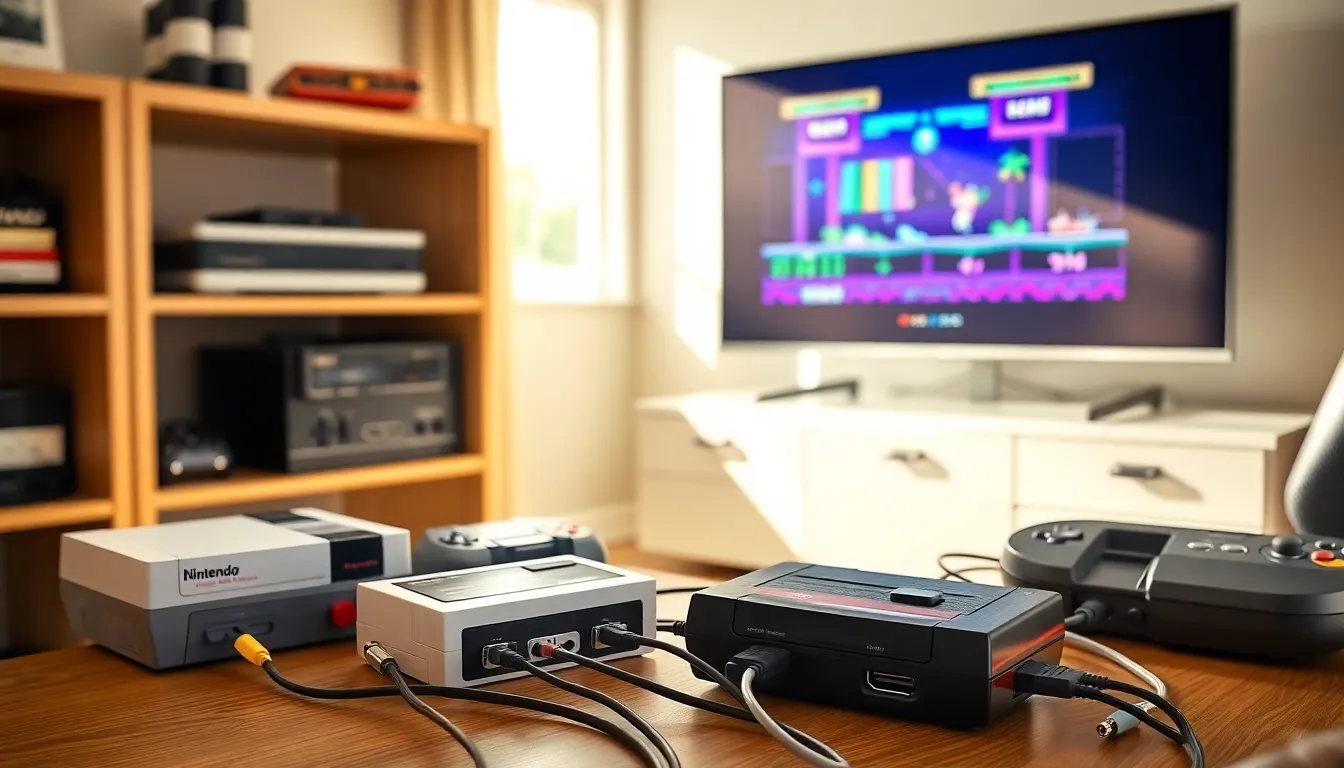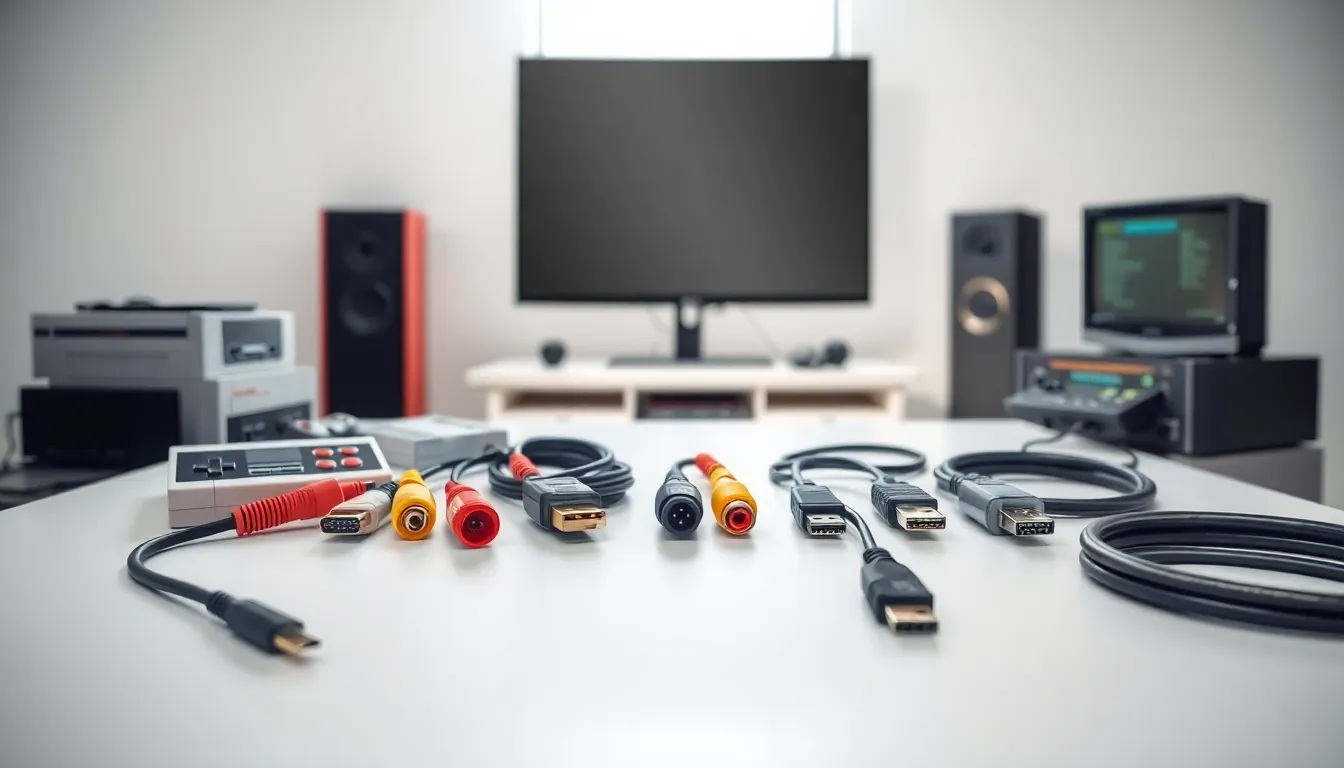Phone:
(701)814-6992
Physical address:
6296 Donnelly Plaza
Ratkeville, Bahamas.

In the world of video gaming, nostalgia is a powerful force, and retro gaming is leading the charge. But before you jump back into pixelated adventures, there’s one crucial element that can make or break your experience: the cables. Yes, those often-overlooked cords connect you to your childhood, without them, your beloved consoles are just expensive paperweights gathering dust. So, buckle up for a comprehensive guide that will arm you with all the knowledge you need about retro gaming cables, from types to troubleshooting and everything in between. Because let’s face it, no one wants to spend a Saturday regretting the wrong cable choice while missing out on their favorite 8-bit soundtrack.

Retro gaming cables are specialized connectors that enable older gaming consoles to interface with modern display technologies. From the original Nintendo Entertainment System (NES) to the Sega Genesis, these cables have played a significant role in preserving the gaming magic of yesteryear.
When discussing retro gaming cables, it’s essential to understand their purpose. They transmit audio and video signals to ensure that your gaming experience is as close to the original as possible. But, with advancements in technology, the landscape of these cables has evolved significantly, and not all cables are created equal. Whether it’s composite, component, or HDMI, the type of cable you choose impacts the quality of your gameplay.
Also, it’s fascinating to see how retro consoles are adapting to modern technologies. You may find yourself surprised at how a simple cable swap can dramatically enhance your gaming experience.
In the vast world of retro gaming cables, several types stand out, each tailored to different consoles and needs.
Composite cables are the classic choice. Typically featuring three RCA connectors (yellow for video, red and white for audio), they deliver a decent picture quality, but expect some fuzziness, especially compared to modern standards. For consoles like the NES and PlayStation, composite is often the go-to.
If you’re seeking a step up from composite, S-Video is your best bet. It separates the video signal into luminance and chrominance for much clearer visuals. Consoles like the Super Nintendo (SNES) shine with S-Video, showing off their colorful graphics much better than with composite cables.
Component cables offer another upgrade, capable of delivering high-definition images. They’re composed of three cables for video and two for audio, and are often used with later-generation consoles like the Xbox and PlayStation 2. Expect rich colors and clearer images, making the gameplay experience incredible.
Who says you can’t teach an old dog new tricks? Thanks to adapters, many retro consoles can now benefit from HDMI cables, offering the best possible resolution on modern TVs. This is arguably the gold standard for anyone looking to connect their favorite systems to today’s technology.
Selecting the appropriate cable for a retro console can feel overwhelming, given the myriad options available. Here are a few crucial steps to simplify your choice.
First, identify the console model. Each system has specific connectors, and knowing what you’re working with will significantly narrow your options. For instance, an Atari console will require different cables compared to a Nintendo 64.
Next, consider what type of display you’re using. If you’re gaming on an old CRT TV, composite or S-Video cables might suffice. But, if a sleek flat-screen feels more appropriate, investing in HDMI cables, using an adapter if necessary, is the way to go.
Finally, pay attention to reviews. Many enthusiasts have tested various cables, offering valuable insight into which ones deliver the best quality. Reading through user experiences can save you from wasting money on subpar products.
Getting your retro gaming cables connected properly can sometimes feel like unlocking a secret level. But fear not. Installation is often straightforward, if you keep a few pointers in mind.
Even though the excitement of retro gaming, issues can crop up more often than one might think. Here’s how to tackle some of the most common problems:
Looking ahead, the future of retro gaming cables appears bright and filled with innovation. As retro gaming continues to gain traction, manufacturers are evolving to create cables that not only meet modern demands but capture the charm of classic gaming.
Expect to see more adapters that help better connections between these iconic systems and modern displays. This seamless integration could open up new realms of possibilities, from enhanced graphics to even more immersive gameplay experiences.
Plus, with ongoing interest, communities around retro gaming continue expanding. These passionate enthusiasts often share insights on optimizing older systems with newer technology, directly influencing what products appear on the market.